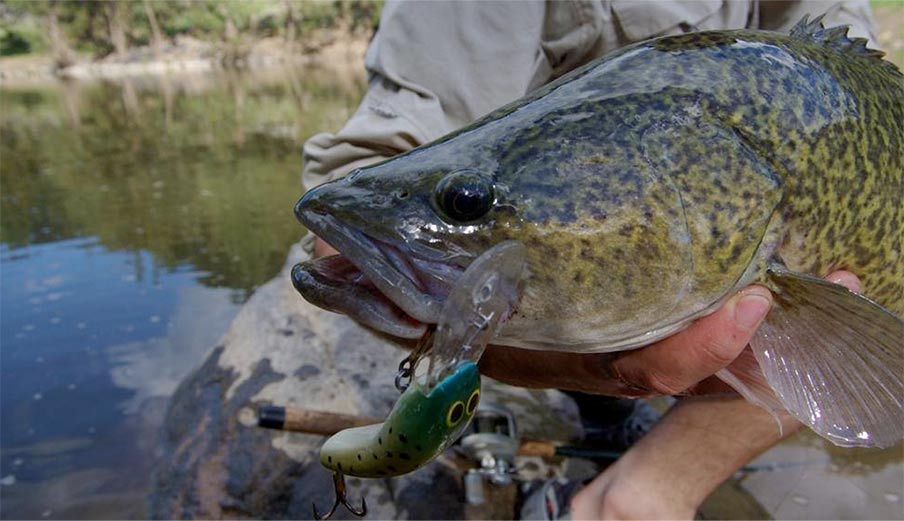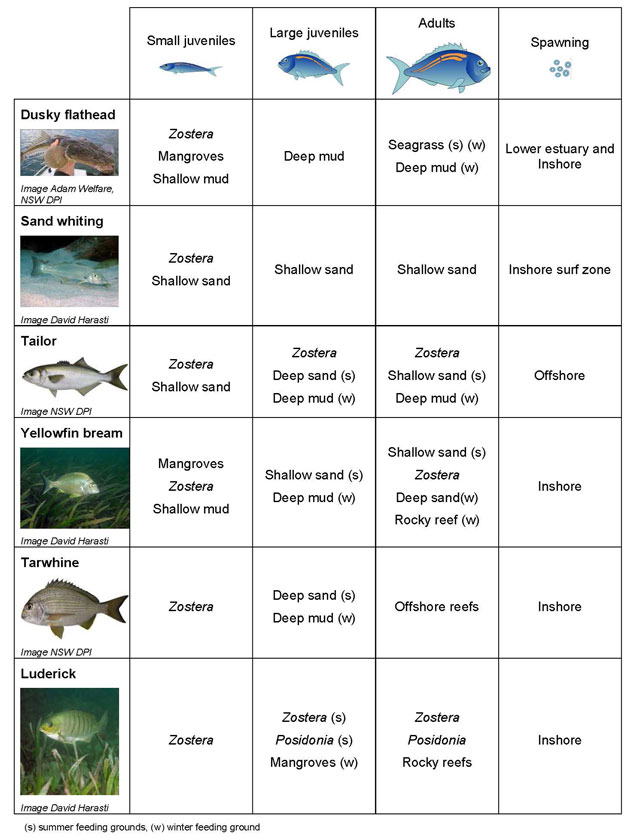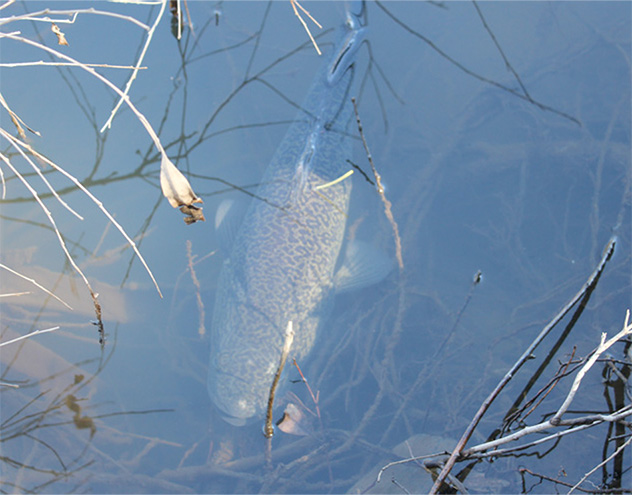
The growing fish faces predation, disease, hunger and the risk of drying out (particularly in inland waterways). The more suitable habitat there is available, the more juveniles will survive to breeding age.
The things fish eat include plants, macroalgae (seaweed), plankton (microscopic animals and plants), invertebrates (mosquito larvae, dragonflies, shrimp) or other fish. Each of these also needs particular habitat conditions.
It is important to remember that our aquatic environments are very complex. Even the most unassuming components, such as leaves, are crucial to the overall balance of the system. Changes to habitat might not affect the fish directly but might affect their food source. This, in turn, means that the fish can no longer survive in that habitat or competition for food might increase.

Estuaries are complex aquatic environments which support diverse and productive fisheries. Juvenile fish species including flathead, leather jacket, bream, mangrove jack and whiting utilise specific areas of estuaries and rivers differently and at different stages of their life cycle.
Habitat features such as sand and mudflats, seagrass beds, floodplain wetlands, saltmarsh and mangrove forests are important nurseries areas. For example, in Botany Bay New South Wales many common recreational fish species utilise several different habitats such as Zostera and Posidonia (seagrasses), sandy and muddy bottom areas, mangroves and rocky reefs.
Fish also need to be able to hide from predators and shelter from extreme conditions, such as floods and harsh sunlight. If these features are removed from fish habitat, then both juvenile and adult fish become vulnerable to predators.
In freshwater, instream structure, such as rocks, submerged logs and branches (snags), vegetation and deep pools or undercut banks, provides fish with places to shelter. In estuaries, seagrasses and mangrove forests provide shelter for juvenile fish from predators.
Australian bass are voracious carnivores and get close to half their summer diet from the insects that fall from river bank vegetation.
Harris, J.H. (1985) Diet of Australian bass, Macquaria novemaculeata (Perciformes: Percichthyidae) in the Sydney Basin. Australian Journal of Marine and Freshwater Research 36: 219–34.
The mangrove jack is well regarded as an excellent sports fish within our estuaries and around offshore reefs. Adult mangrove jack spawn offshore and juveniles then re-enter estuaries in the following months where they spend the next 3-11 years of their life. Mangrove jack have been recorded over 100 km upstream from the ocean, well and truly into freshwater habitat.
Some native freshwater fish prefer areas with at least 80 % coverage of instream structure. Murray cod and trout cod use snags. Murray cod often prefer snags closer to the river bank whilst trout cod prefer snags in the middle of a river. Around 80 % of Murray cod are found within 1 metre of a snag they can use for shelter.
Koehn, J. and Nicol, S. (1998). Habitat and movement requirements of fish. In proc. 1998 Riverine Environmental Forum (Eds. R.J. Banens and R. Lehane) pp. 1-6. October 1998, Brisbane, Queensland. Murray-Darling Basin Commission.